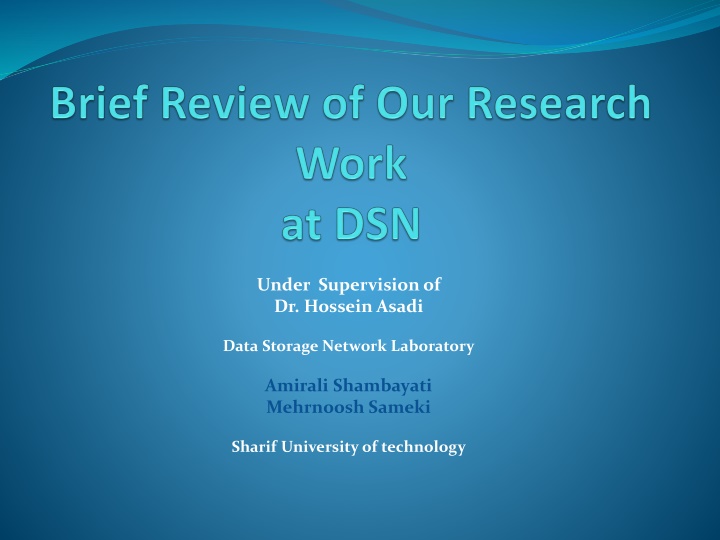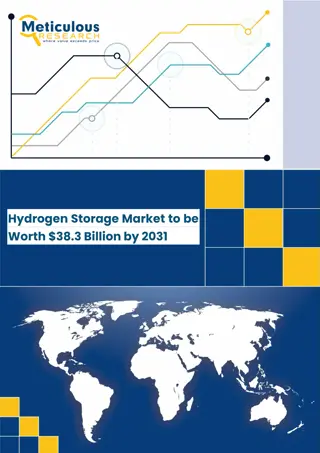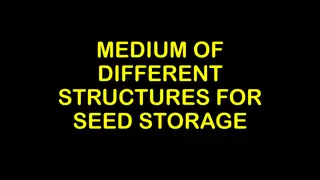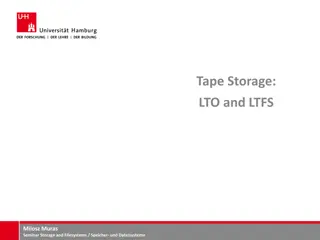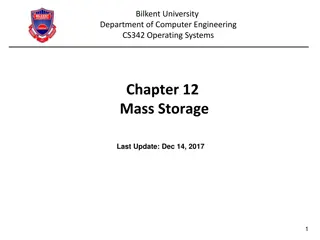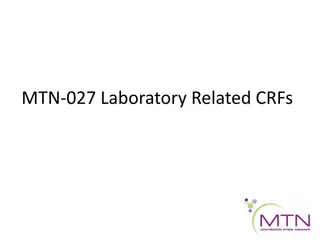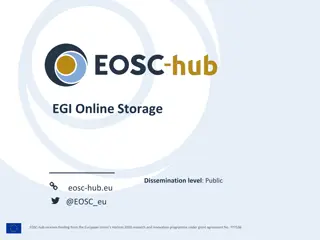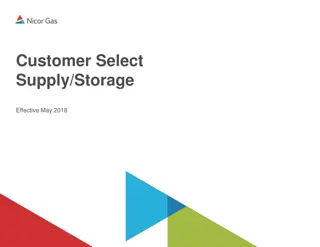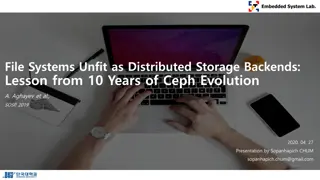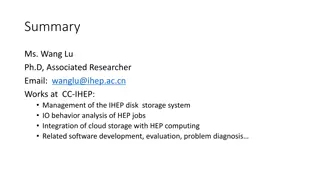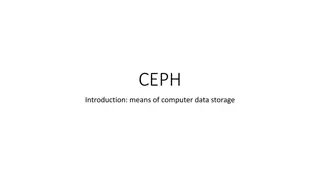Data Storage Network Laboratory Project
Engage in a project under the supervision of Dr. Hossein Asadi at Sharif University of Technology focusing on Solid State Drives (SSD). Explore the definition, advantages, and disadvantages of SSDs, as well as technical steps for optimization. Utilize tools like BLKTrace for assessing IO schedulers' performance.
Download Presentation

Please find below an Image/Link to download the presentation.
The content on the website is provided AS IS for your information and personal use only. It may not be sold, licensed, or shared on other websites without obtaining consent from the author.If you encounter any issues during the download, it is possible that the publisher has removed the file from their server.
You are allowed to download the files provided on this website for personal or commercial use, subject to the condition that they are used lawfully. All files are the property of their respective owners.
The content on the website is provided AS IS for your information and personal use only. It may not be sold, licensed, or shared on other websites without obtaining consent from the author.
E N D
Presentation Transcript
Under Supervision of Dr. Hossein Asadi Data Storage Network Laboratory Amirali Shambayati Mehrnoosh Sameki Sharif University of technology
What We Cover in This Presentation Project Definition Part 1 Tools have been used Looking for appropriate validation ways Part 2 Our Previous Project at DSN Part 3
Project Definition -What is Solid State Drive(SSD) Uses solid-state memory to store persistent data viable alternative to traditional magnetic storage media.
Project Definition -What is Solid State Drive(SSD) Advantages: Less susceptible to physical shock, quieter , lower access time and latency than HDD. Same interface as HDD(Advantage for OS developers)
Project Definition -What is Solid State Drive(SSD) Disadvantages: Random write speeds, may not have such a clear advantage in performance(Our major target is optimizing OS to hide this disadvantage)
Project Definition -Technical Steps Looking for the best Linux IO Scheduler in random write speed Optimizing the resulted IO scheduler for SSD.
Trace Tools We have chosen blktrace to evaluate IO schedulers Performance
BLKTrace Ability to see what's going on inside the block I/O layer Need to know the specific operations performed Upon each I/O submitted into the block I/O layer Who? Kernel developers in the I/O path: Block I/O layer, I/O scheduler Performance analysis engineers
BLKTrace Emits events for specific operations performed on each I/O entering the block I/O layer
BLKTrace Feature List Provides detailed block layer information concerning individual I/Os Userselectable events can specify filter at event acquisition and/or when formatting output Supports both live and playback tracing
BLKTrace User Selectable Events Request queue entry allocated Request queue insertion Request issued to underlying block device Request queue plug/unplug operation Request completed
BLKTrace and BLKParse blktrace: Device configuration, and event extraction utility Store events in (long) term storage /pipe to blkparse utility for live tracing Networking feature to remote events for parsing on another machine blkparse: Event formatting utility Supports textual output
Switch Between Different IO Schedulers in Linux Show Current Scheduler: # cat /sys/block/sda/queue/scheduler noopanticipatory deadline [cfq] Change Current Scheduler # echo anticipatory > /sys/block/sda/queue/scheduler
Generating Benchmark Trace IOZONE has been used as our benchmark
Feeding Disksim by BLKTrace output Converting BLKTrace output to Disksim default input trace file. Problem on this way: As our hard disk size was much bigger than disksim s SSD model,SSD model couldn t recognize some of read and write addresses. 1.
Feeding Disksim by BLKTrace output Solutions to the problem mentioned: Manipulating SSD model file(modifying block or page sizes) to fit to our hard disk size.(not successful) Finding the minimum block address.mapping it to zero and mapping other block addresses to the differentiate between minimum block address and itself. .(not successful) Applying the previous solution on cylinders. .(not successful) Creating a new partition exactly with the same size as SSD model(using Gparted) and running IOZONE benchmark on this partition. .(not successful) To be continued ! This problem is still open 1. 2. 3. 4. 5.
Previous Project: Extracting Simics Trace Output Simics is a full-system simulator Simics runs a virtual machine which boots a operating system by itself. We have used X86 machine image. We extracted machine s trace and converted its output to a standard format needed for DSN Lab s simulations.
